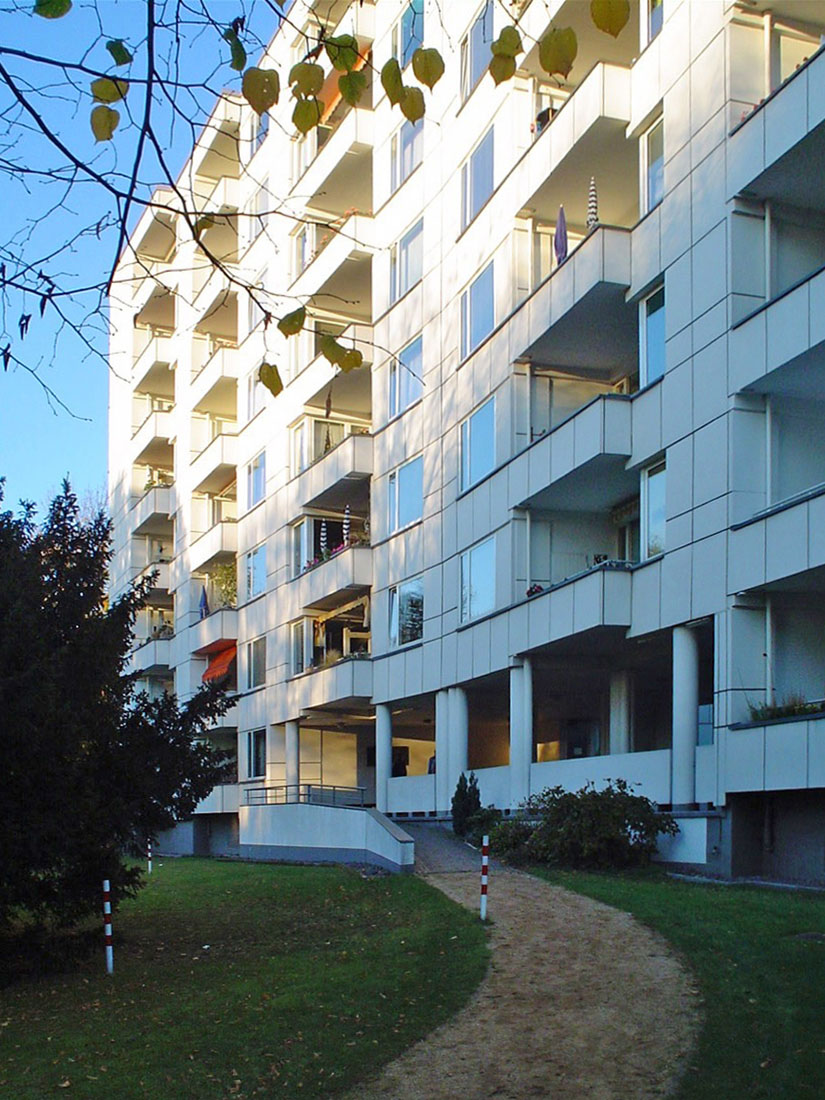 |
 |
 |
 |


Apartment Building Interbau
Klopstockstrasse 30 - 32, Berlin
1954 - 1957
In 1954 Alvar Aalto was invited to take part in the Interbau Berlin exhibition, which was held in 1957. Main intention of this exhibition was to create a new city district north of Tiergarten, in an area which was completely destroyed during World War II. For the planning of the so-called Hansaviertel internationally renowned architects such as Walter Gropius, Oscar Niemeyer and Arne Jacobsen were envited to work along with German experts. The Hansaviertel was intended to consist mainly of apartment blocks, but there were also built some terraced houses. Alvar Aalto had made proposals for several different sites. His final design 'Haus 16' is to be found in the cenetre of the area next to the underground station. On the exterior, the building is clad with light-coloured concrete slabs. The design by Alvar Aalto was conceived as two point blocks joined together. Entrances to the building are located on two different levels. Main access is made by the so caled 'hall of columns', which is located on the upper level and is to be interpreted as a squere between the two blocks. This free-flowing outdoor space has direct asccess to the nearby green area. Each of the blocks contains a well lit and spacious staircase, whereas each landing gives acces to five apartments. Alvar Aalto tried do have as many flats as possible oriented towards the west and southwest. The building contains a total of 100 apartments of different sizes, with a majority of larger units. The smallest flats feature 35 square meters in comparison with the larger ones of 83 - 90 square meters. For the layout of the flats it is important to note, that the architect wanted to have the advantages of a single family home adapted to the large apartment building. Alvar Aaltos idea of dwellings developing around a central hall was crucial for the design of the Hansaviertel apartment building. The balconies, which often appear as narrow corridors, were enlarged to create spacious and well sheltered patios. The interior spaces are grouped around this patio, giving it a higher significance, and making the balcony one of the rooms.